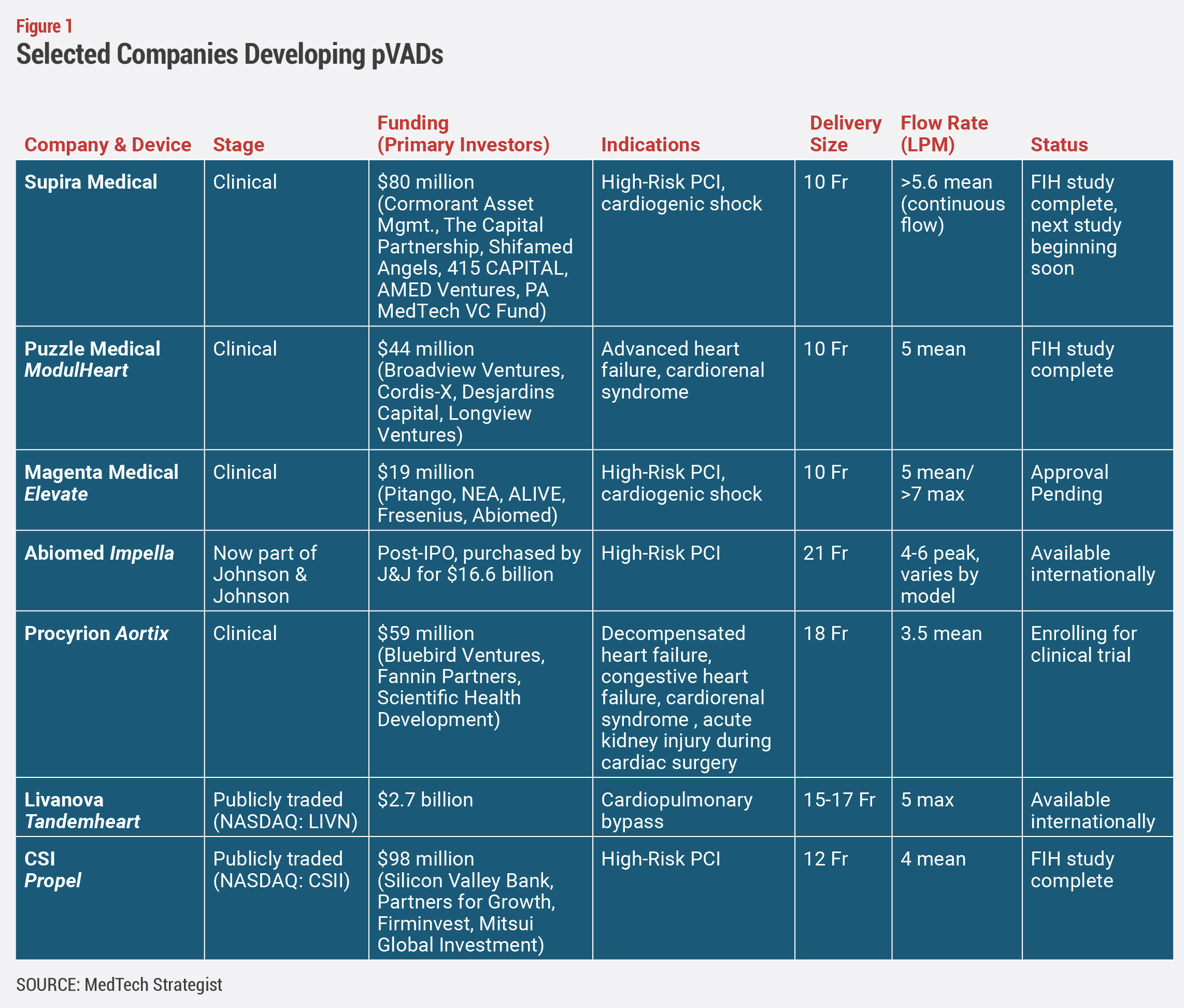ARTICLE SUMMARY:
The ability of percutaneous ventricular assist devices to stabilize hemodynamics makes them more broadly applicable than originally foreseen, and the range of indications has grown from a short-term crutch for patients with heart failure to a permanent solution and a buffer against complications in high-risk coronary procedures. Excerpted from our recent feature article.
Interest in heart failure technology is strong lately, as evidenced by Johnson & Johnson’s recent acquisition of Abiomed; J&J paid $16 billion for the diversified cardiac device manufacturer, which was founded in 1981 to develop the world’s first artificial heart. Since then, Abiomed has expanded through several key acquisitions of its own to support compromised hearts in various ways. Artificial heart pumps, in use for nearly 60 years, have mainly been relegated to temporary circulatory support for patients following cardiac surgery or leading up to a heart transplant. These pumps, called left ventricular assistance devices (LVADs), have traditionally required open-heart surgery to implant. In the last few decades, however, there has been a rise in pVADs (percutaneous ventricular assist devices), LVADs designed for minimally invasive percutaneous catheter delivery. The ability of pVADs to stabilize hemodynamics makes them more broadly applicable than originally foreseen, and as the technology has matured, its range of indications has grown commensurately from a short-term crutch for patients with heart failure to a permanent solution and a buffer against complications in high-risk coronary procedures.
Together, high-risk angioplasty and complex percutaneous coronary interventions (PCIs) account for nearly 440,000 procedures annually in the US, more than twice as many as three years ago. These patients suffer from advanced coronary artery disease or complicating comorbidities that make interventional procedures too risky without mechanical circulatory support. Additionally, pVADs are used to treat patients suffering from cardiogenic shock, which can occur following a severe heart attack. There are an estimated 165,000 cardiogenic shock cases in the US each year and despite intervention, the condition is still associated with a high rate of morbidity as it suddenly renders the heart too weak to adequately pump blood to vital organs.
 An increasing trend of pVAD use is accompanied by a decline in the use of therapies such as extracorporeal membrane oxygenation or intra-aortic balloon pumps, which lack some of the safety features built into more modern devices and have been associated with cases of ischemia, arterial injury, and stroke. These complications can be costly, and have prompted many interventional cardiologists to opt for a more economical percutaneous solution that entails less risk. Several companies, both large and small, have set out to provide such solutions with greater capabilities than pVADs have historically demonstrated (see Figure 1). In the feature article on which this excerpt is based, MedTech Strategist speaks with three developers of novel pVADs: Supira Medical, Magenta Medical, and Puzzle Medical Devices, companies dedicated to ameliorating patient outcomes, improving economics, and addressing a greater range of indications.
An increasing trend of pVAD use is accompanied by a decline in the use of therapies such as extracorporeal membrane oxygenation or intra-aortic balloon pumps, which lack some of the safety features built into more modern devices and have been associated with cases of ischemia, arterial injury, and stroke. These complications can be costly, and have prompted many interventional cardiologists to opt for a more economical percutaneous solution that entails less risk. Several companies, both large and small, have set out to provide such solutions with greater capabilities than pVADs have historically demonstrated (see Figure 1). In the feature article on which this excerpt is based, MedTech Strategist speaks with three developers of novel pVADs: Supira Medical, Magenta Medical, and Puzzle Medical Devices, companies dedicated to ameliorating patient outcomes, improving economics, and addressing a greater range of indications.
Trial MyStrategist.com and unlock 7-days of exclusive subscriber-only access to the medical device industry's most trusted strategic publications: MedTech Strategist & Market Pathways. For more information on our demographics and current readership click here.


